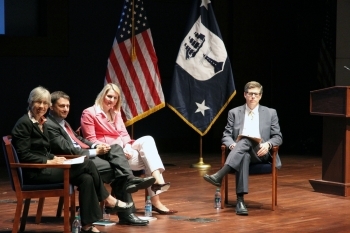Jun172014
Posted at 1:19 PM
Guest blog post by Mark Doms, Under Secretary for Economic Affairs
Where to locate your business or a new facility for your business is a complicated decision. Many variables are involved, and if you are considering a location outside of the U.S., there are many factors that may not be obvious. At Commerce, we have been focused on making this decision and all of its moving parts easier to digest, and a major part of that is Commerce’s ACE Tool.
First released in April 2013, the Assess Costs Everywhere (ACE) tool outlines the wide range of costs and risks associated with offshore production, and provides links to important public and private resources, so that firms can more accurately assess the total cost of operating overseas.
Today we have updated the data and deepened the analysis, but the original conclusions remain as fresh as ever. Multiple costs and risks--some visible and some hidden--accompany firms' decisions about where to set up a factory and the supply chain.
I have had the pleasure of meeting frequently with business owners from across the country. They talk about where their challenges are in growing and sustaining their businesses, and they also talk about how locating production abroad hasn’t always turned out as well as they had hoped. Not surprisingly, during our current economic recovery and expansion, news reports and private consultants have repeatedly echoed that thinking. Increasingly we hear that U.S. companies that previously took their operations or supply chains overseas are now reshoring, or insourcing, bringing operations and supply chains back home to America.
The ACE Tool is intended to help businesses think through this complicated decision, and provide easy access to innovative research and thinking on issues related to site selection and supply chains. The ACE Tool is grounded in the forward-thinking work of Harry Moser of ReshoreNow.org and Rep. Frank Wolf, who called on Commerce to bring this effort to fruition. The Department of Commerce developed ACE in response to Rep. Wolf's call to help achieve our shared goals of boosting U.S. economic growth and ensuring that America remains competitive in manufacturing.
ACE explores 10 costs and risks:
- Labor costs
- Travel and oversight
- Shipping
- Product quality
- Trade financing costs
- Inventory
- Other inputs
- Intellectual property
- Regulatory compliance costs
- Political and security risks
Today's ACE update adds a discussion based on innovative research from Dr. Suzenne de Treville of the University of Lausanne. Her research and soon-to-be released tool, which will be available on the ACE website, helps firms put a monetary value on the lead-time between ordering and receiving components from suppliers. How much is it worth to them to reduce the lead-time? Put another way, what kind of savings must they have to justify increasing their lead times from offshoring? It’s often more than you’d think, and yet another important variable in this consideration.
ACE also highlights the stories of some firms that have done the math and subsequently increased their investments in the United States.
Furthermore, ACE is a portal to valuable resources like SelectUSA and Harry Moser's Total Cost of Ownership Estimator--which greatly informed the development of ACE.
Another resource many companies may find valuable is MEP Total Cost of Ownership (TCO) tool. Building upon the ACE framework, MEP created the TCO tool to help businesses determine the total costs of one supplier relative to up to three others under multiple scenarios. TCO focuses on minimizing the total costs while maximizing value to the customer. It encourages a sharper focus on the big-picture concept of complete supply chain optimization.
In the current economic expansion, we have witnessed a welcome resurgence in the U.S. manufacturing sector. More than 600,000 manufacturing jobs have been created -- many undoubtedly because domestic and foreign firms have realized the low costs and risks associated with locating in the United States.
This is clearly progress, and at Commerce we will continue to do all we can to ensure that businesses have the right data, and the right guidance to think through complicated questions like location and supply chain dynamics.


